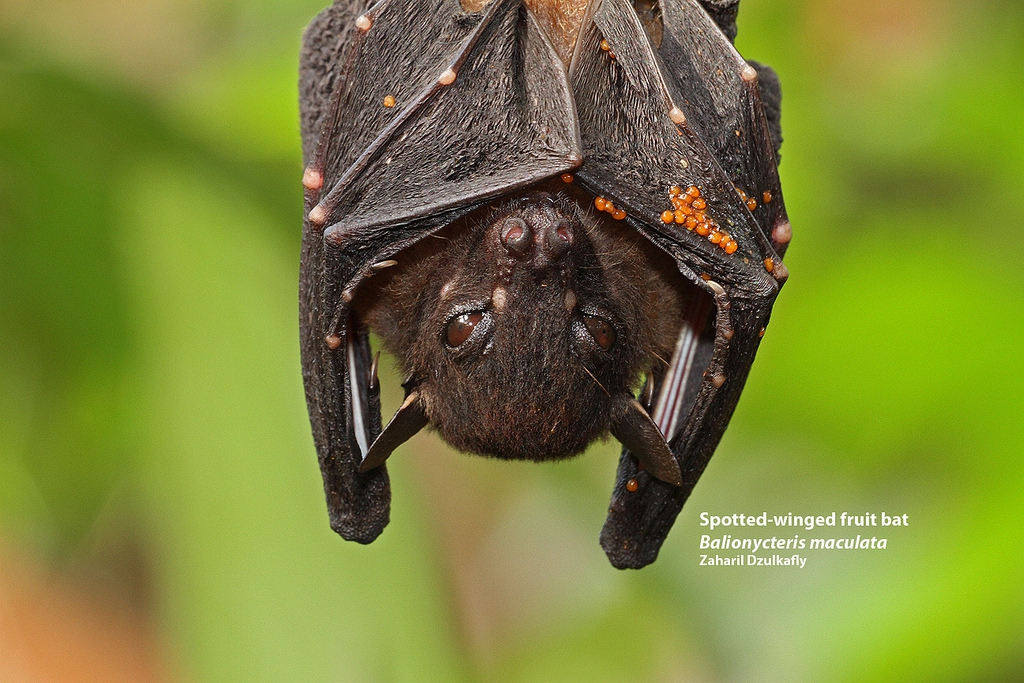| Citation |
|
Description |
Geographic Range [top]
Range Description: This species occurs throughout the Malay Peninsula, northern and western Borneo (Brunei, West Kalimantan, Sabah, and Sarawak), the Riau Archipelago (on the islands of Durian and Galang), and southern Thailand (Hodgkison and Kunz 2006). In Thailand, it is known only from Khao Phu Pah, in Trang Province (Corbet and Hill 1992; Lekagul and McNeely 1977). It also has been recorded in the Tigapuluh Hills on the island of Sumatra, Indonesia, on the Riau–Jambi provincial border (Danielsen et al. 1997). Recent surveys have confirmed its presence also in more southern localities in central and east Kalimantan (Suyanto and Struebig 2007).
Countries occurrence:
Native:
Brunei Darussalam; Indonesia; Malaysia; Thailand
Additional data:
? Upper elevation limit (metres): 1500
Range Map: Click here to open the map viewer and explore range.
Population [top]
Population: In Peninsular Malaysia it is common in primary lowland rain forest (T. Kingston pers. comm.).
Current Population Trend: Unknown
Additional data:
? Population severely fragmented: No
Habitat and Ecology [top]
Habitat and Ecology: This species occurs in primary lowland rainforest from sea level up to 1,500 m asl, and is also found in mangroves (Hodgkison and Kunz 2006). In Kalimantan it inhabits secondary and primary forest. It roosts in ferns in rubber trees and excavated termite nests. It usually forms small harem groups. It has also been reported from rubber plantations managed by villagers which retain vegatative structure (A. Suyanto pers. comm.).
Systems: Terrestrial
Threats [top]
Major Threat(s): This species is locally threatened throughout much of its distribution by deforestation for agriculture, logging and plantations, and as a result of fire. Scattered populations in southern Thailand, Sumatra, and the Riau Archipelago may be particularly vulnerable (Hodgkison and Kunz 2006).
Conservation Actions [top]
Conservation Actions: On the Malay Peninsula and Borneo (Sabah, Sarawak, Brunei, and western Kalimantan), this species occurs within several reserves and protected areas, including production forests (Hodgkison and Kunz 2006).
Citation: Bates, P., Bumrungsri, S., Suyanto, A., Francis, C. & Kingston, T. 2008. Balionycteris maculata. The IUCN Red List of Threatened Species 2008: e.T2538A9450707. http://dx.doi.org/10.2305/IUCN.UK.2008.RLTS.T2538A9450707.en. Downloaded on 10 August 2017.
Disclaimer: To make use of this information, please check the .
Feedback: If you see any errors or have any questions or suggestions on what is shown on this page, please provide us with feedback so that we can correct or extend the information provided
|

